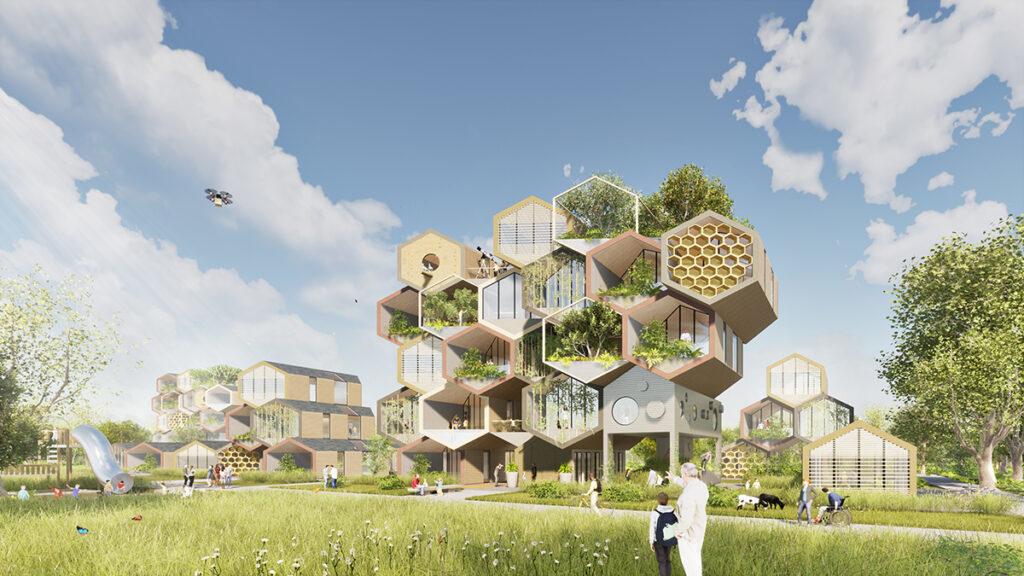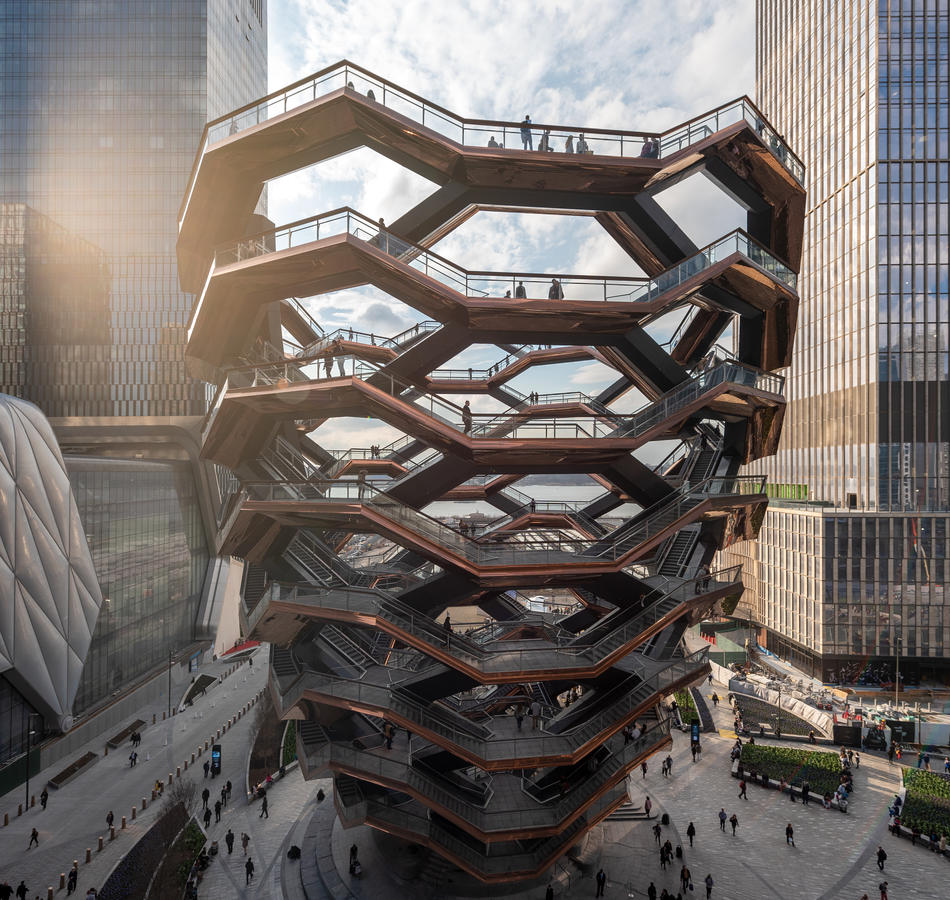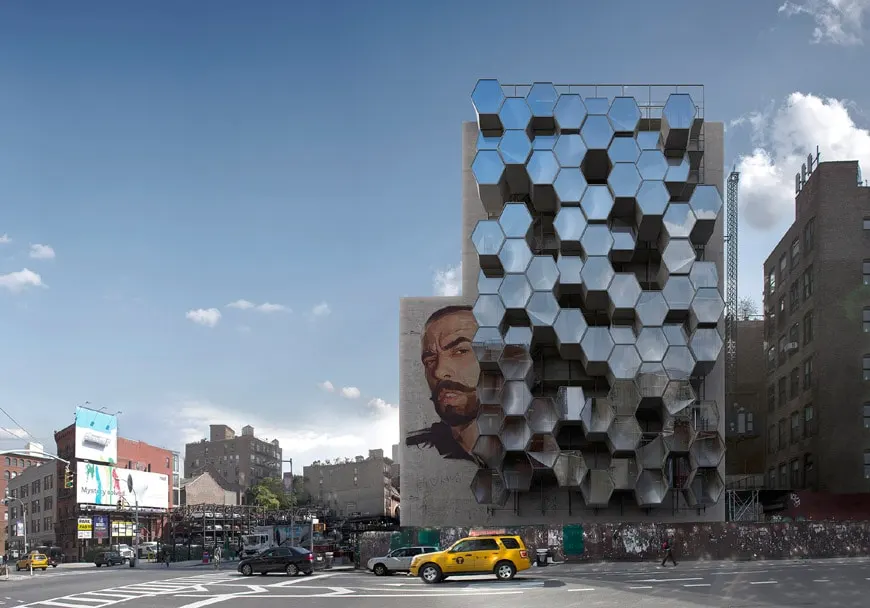Buildings Inspired By Beehives? Why should we get inspired by bees? A beehive is essentially an office for a huge number of bees. The bees have a central location, everyone knows where to go and there is an unspoken structure to everything. Many people think that the use of the bee hive as an inspiration for architecture and design is something new but it’s not.
The Egyptians used the design in the construction of their pyramids and now architects are using the same ideas in designing their buildings. Bees are amazing creatures. Not only do they produce honey, but they also pollinate flowers and plants. Their hives are fascinating structures, and it’s no wonder that humans have been inspired by them when designing buildings.
Bee hives are typically round or oval in shape, with multiple levels. The honeycomb cells within the hive are also round and arranged in a spiral pattern. This allows the bees to move easily from one cell to another.
The honeycomb cells are made from beeswax, which the bees produce themselves. The wax is then used to build the comb, which can be up to three feet long and two feet wide. The comb is where the bees store their honey, as well as their eggs and larvae.

Buildings Inspired By Beehives
Humans have used the bee hive as inspiration for everything from office buildings to apartments. The round shape of the hive is efficient and space-saving, and the spiral pattern of the comb can be replicated in staircases and hallways. The bee hive is a truly inspiring structure and one that we can learn a lot from.
The HIVE project
Gianluca Santosuosso, an architect, was wondering how nature would respond to the same design brief he had been given. He looked to a beehive as an excellent example of how residential housing could be designed to benefit humans, animals, and plants all at once. The “HIVE Project” is a completely new approach that tackles current challenges in a way that is positive for everyone involved.
Could this be a step forward for a green future? The honeycomb-house hybrid is a concept that takes the best of both worlds to create a unique living space. This residential model includes elements of the honeycomb for its strength and stability, as well as the shape of the archetypal house to create a comfortable and familiar living space. But this concept goes beyond just human needs; it includes flora, fauna, wind, and rain as well. In this model, humans are not given a privileged status above the rest of the natural world – instead, we are seen as equals among all other beings.
The modular honeycomb system is designed to meet the needs of residents, which includes options like a stairwell or a lift for two-storey units. Ramps and smooth paths replace conventional steps for barrier-free access. On higher floors, open modules provide space for greenery, where gardens and playgrounds can be enjoyed privately or collectively.

The Vessel
The Vessel is a beautiful and intricate set of spiralling staircases that is the iconic centrepiece of NYC’s Hudson Yards. It is a popular spot for tourists and locals alike, and it is definitely worth a visit when you are in the area!

The structure is made up of 154 interconnecting flights of stairs, 2,500 individual steps and 80 landings. The Vessel offers breathtaking panoramic views of the cityscape from its various levels and vantage points. It has become a popular destination for tourists and locals alike, providing a unique and memorable experience of New York City.
The Hive
The Hive is a one-of-a-kind building at Nanyang Technological University in Singapore. Its unique shape has a symbolic meaning and practical use. Heatherwick Studios designed the contemporary interior to allow students and professors to interact more. The flexible formatting in the 56 rooms, numerous corridors, and open atriums encourage socializing and the “cross-pollination” of brilliant ideas.

Homed: Homeless Shelter
Framlab, an Oslo/New York studio, has been working on a concept for homelessness that takes inspiration from bee hives. Their proposal involves a series of modular hexagonal structures that would be hung from the facades of existing buildings, taking advantage of unused vertical spaces. This would create a scaffolding-like framework that could provide homes for those in need.

The Ancient Beehive Huts- Ireland
The ancient beehive huts of Ireland are some of the most fascinating and unique structures in the world. These curious huts, which resemble beehives in their shape, were once used as homes by early humans in Ireland. Today, they are one of the country’s most popular tourist attractions. The beehive huts were built by stacking stones on top of each other in a circular shape. The
stones were then covered with a thatched roof, which was often made from straw or reeds. The huts were small, with a low door and no windows. Inside, there was just enough space for a few people to sleep and store their belongings.

Despite their primitive appearance, the beehive huts were actually quite cleverly designed. They were solid and stable and could withstand strong winds and heavy rains. They were also surprisingly warm in the winter and cool in the summer.
Today, there are only a few dozen beehive huts left in Ireland. However, they are still a popular tourist destination and many people come to see them every year

